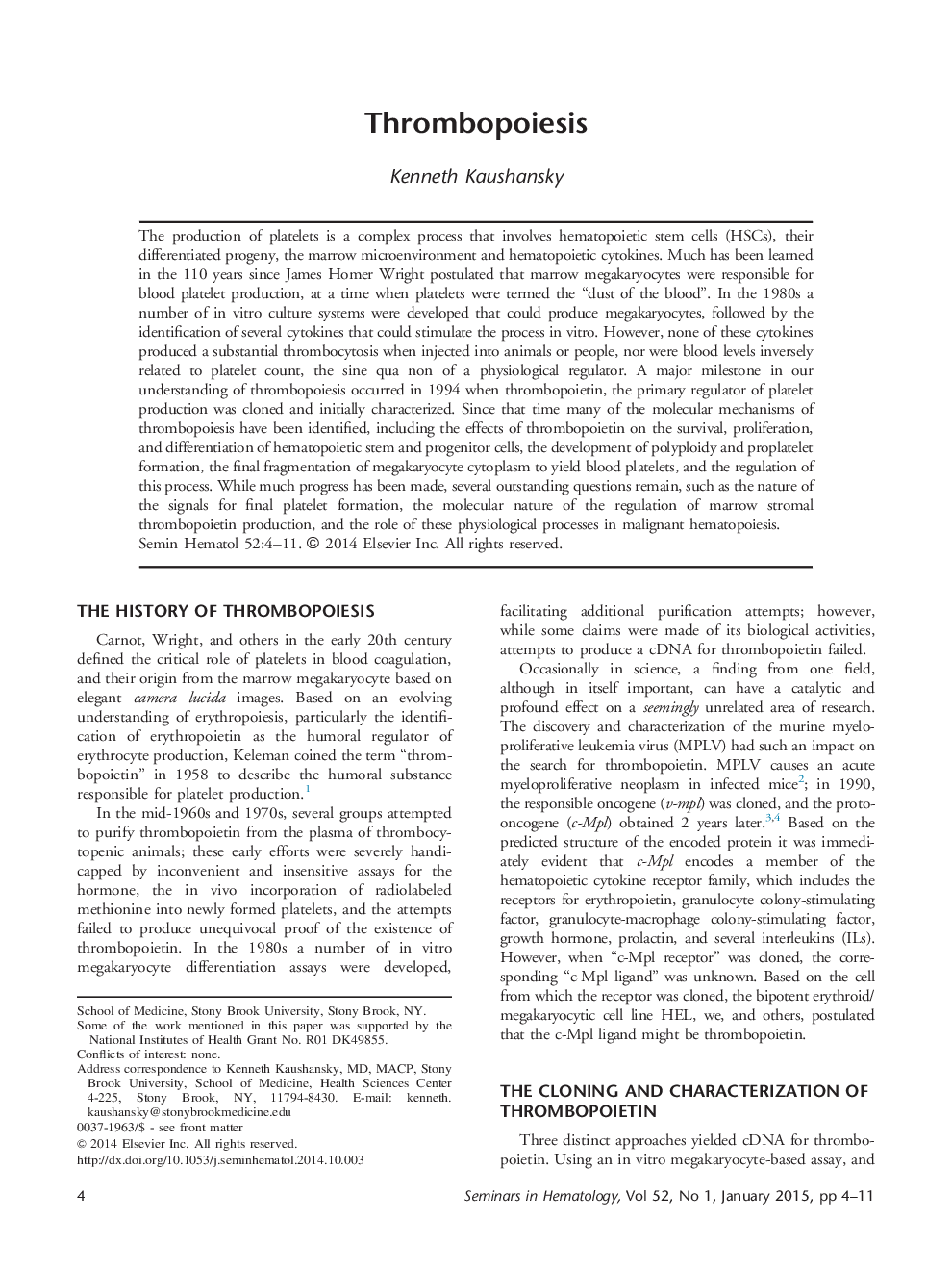| Article ID | Journal | Published Year | Pages | File Type |
|---|---|---|---|---|
| 3333490 | Seminars in Hematology | 2015 | 8 Pages |
The production of platelets is a complex process that involves hematopoietic stem cells (HSCs), their differentiated progeny, the marrow microenvironment and hematopoietic cytokines. Much has been learned in the 110 years since James Homer Wright postulated that marrow megakaryocytes were responsible for blood platelet production, at a time when platelets were termed the “dust of the blood”. In the 1980s a number of in vitro culture systems were developed that could produce megakaryocytes, followed by the identification of several cytokines that could stimulate the process in vitro. However, none of these cytokines produced a substantial thrombocytosis when injected into animals or people, nor were blood levels inversely related to platelet count, the sine qua non of a physiological regulator. A major milestone in our understanding of thrombopoiesis occurred in 1994 when thrombopoietin, the primary regulator of platelet production was cloned and initially characterized. Since that time many of the molecular mechanisms of thrombopoiesis have been identified, including the effects of thrombopoietin on the survival, proliferation, and differentiation of hematopoietic stem and progenitor cells, the development of polyploidy and proplatelet formation, the final fragmentation of megakaryocyte cytoplasm to yield blood platelets, and the regulation of this process. While much progress has been made, several outstanding questions remain, such as the nature of the signals for final platelet formation, the molecular nature of the regulation of marrow stromal thrombopoietin production, and the role of these physiological processes in malignant hematopoiesis.
